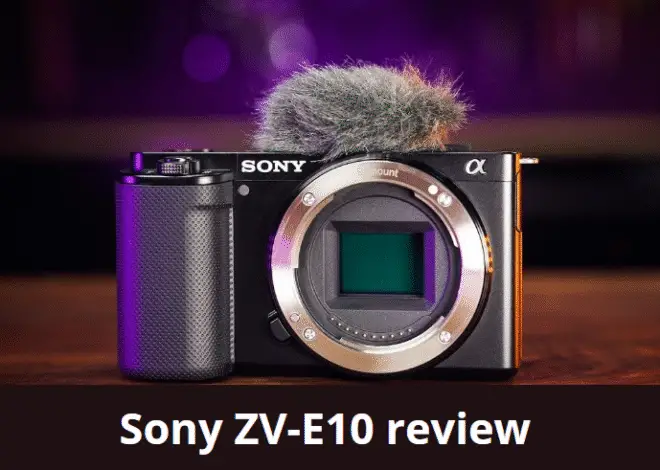
Exposure: Overexpose or Underexpose? A Detailed Guide
As an Amazon Associate, I earn from qualifying purchases.
Exposure is one of the most fundamental terms in photography. It is the amount of light that enters the camera sensor to determine how bright the photo comes out.
Achieving the proper exposure and mastering it will never be an easy feat. This topic bothers professional photographers because they have to change their settings in every situation, theme or frame.
It is essential to understand how exposure works and the different exposure values to create and take the best photos possible. Taking photos without this knowledge is like shooting blind.
In this article, I’ll go over the different exposure scenarios and try to answer ‘is it better to under or over expose?’.
The Exposure Triangle
Three basic components determine exposure in photography. These components are:
- Shutter Speed
- ISO
- Aperture

Together these three components form the exposure triangle. The triangle represents the relationship between the three components. It is also called the photographic triangle.
Knowing how shutter speed, aperture and ISO work together to compose an image is essential to build up the technique.
Aperture
In layman’s terms, it indicates the amount of light that it lets pass the lens. The amount of light admitted into the camera is managed by the movable lens opening. It is measured in fractions and known as f stops or f-number. The lower the amount of f stops the wider the aperture and vice versa.
Shutter Speed
Shutter speed measures the length of exposure. It is the time a camera takes to capture a photo. It determines how long the lens stays open.
It is measured in fractions of a second. This ranges from 1/10 of a second to 1/4000 of a second depending on the camera.
Shutter speeds need to be changed depending on lighting conditions. Lower shutter speeds allow more light to be available for the lens making low-light images brighter and higher shutter speeds allow less light and images to come out a bit dim.
ISO
ISO on the other hand doesn’t need to take in light to make an image brighter unlike the other two. It is the sensitivity of the light sensor within the camera.
Low ISO means less sensitivity and high ISO means more sensitivity to light. ISO scales from 100 to 6400 with some cameras able to expand the number and reach an ISO of 25600.
Overexpose or Underexpose?
Normal exposure means the right combination of the three main components – ISO, Shutter speed and Aperture.
To capture that beautiful moment for a lifetime one must understand the principles and change the values of these to suit their needs.
Photographers underexpose or overexpose an image for artistic purposes sometimes and the results are astounding. Let’s get into the details of when to under or overexpose.
Here is an example of the different exposure amounts.

Over Exposing
It means exposing the image or the film to too much light. The result is that dark areas of an image become filled with more light.
Overexposed photography refers to the practice of taking photos in which the subject has been exposed to excessive light. It limits detail in the photo and reduces any opportunity for shadowing or distinguishable highlights in the image.
There are specific times when a photographer needs to purposely overexpose photos. When digital captures seem too dark, they utilize the space to overexpose the next frame. The camera automatically adjusts the settings to compensate for the new exposure.
When to Overexpose
Overexposing a photo yields less dynamic range but better noise performance. The most common scenarios of overexposing appear in low-light photography.
The camera doesn’t have enough light to get a clean image. To get an image that is exposed correctly the ISO needs to be cranked up high which makes a noisy image.
An overexposed low-light photo when underexposed in post-editing it usually produces a cleaner image. This works even with high iso values such as ISO 8000.
By doing so you get a correctly exposed image.
Under Exposing
Underexposing is when an image appears darker than it should or darker than neutral exposure. It is the result of not enough light hitting the camera’s sensor. These images often lack detail and subjects can even blend in the shadows of the image.
It is the exact opposite of overexposing. It is a type of image that one considers to be too dark.
When there is a lot of light available for the camera to take in or if the frame is directly facing the sun or a well-lit spot, underexposing can help dim them down to bring out more details in the images.
Too much light creates an illusion of patches where detail is supposed to be so it is done to increase the detail in the images.
When to Underexpose
There are many situations in which underexposing makes sense. Generally, when you underexpose a photo you get the benefit of better dynamic range.
It determines how much a camera can keep details in the highlights and shadow areas of the photos. If an image has a bad dynamic range it means the highlights will become white and the shadows will become black.
But it comes with the drawbacks of noise within the shadows. But it preserves brighter background detail and adds contrast to the subjects.
If there is an ample amount of light and images come out containing a lot of flares then the solution is to underexpose and retrieve the exposure in post-processing.
It is however easier to compensate better for underexposure than overexposure in post-production.
Is It Better to Under or Over Expose?
The answer lies in the scenario in which the photo is to be taken in. Photographers under or overexpose in different scenarios to compensate for either too much or too little light to get the right exposure in an image.
If a sunny day is when you’re shooting photos then underexposing to get it to the correct exposure is the way to go.
But if you are looking to shoot photos in low light then you should consider overexposing the frame before taking photos.
Underexpose when images come out too bright that it lacks important details. Overexpose when images come out darker than they are supposed to be.
FAQs.
What do overexposed negatives look like?
Overexposed negatives look dark.
Minor amounts of overexposure can be an intentional artistic decision that increases saturation and contrast. However, extreme overexposure will give you increased grain, low contrast and dull, grey highlights.
How does a photographer properly expose?
Using the light meter inside the viewfinder of your camera.
The most convenient way is to use the automatic modes in the camera as it does all the work for you. All of today’s DSLR cameras have a built-in light meter that reads the light in the scene and tells you if the aperture shutter speed combination will lead to an evenly exposed image.
Which mode do professional photographers shoot in?
Aperture priority mode.
Because it gives them ease of control of the depth of field.
Summary
Photographers most of the time want the correct exposure. Exposure can also be a creative choice that helps achieve a particular goal. Which means there is no correct exposure.
The question of overexposure or underexposure inadvertently falls upon the user and their preference. It also depends on the scenario and lighting conditions they take photos in.
So there is no one correct answer to do one or the other. If situations demand you should over or underexpose an image to suit your needs. I hope this article helps you understand the fundamentals of exposure and when to under or over expose.



